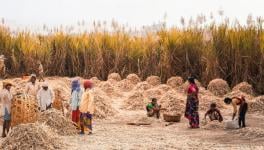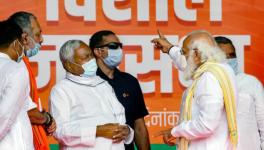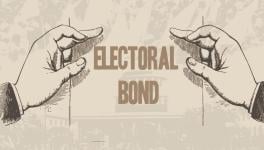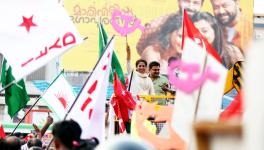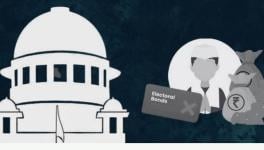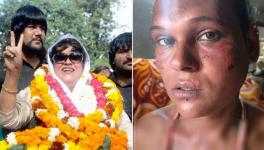Indo-Naga Talks: The Difficult Road to Peace
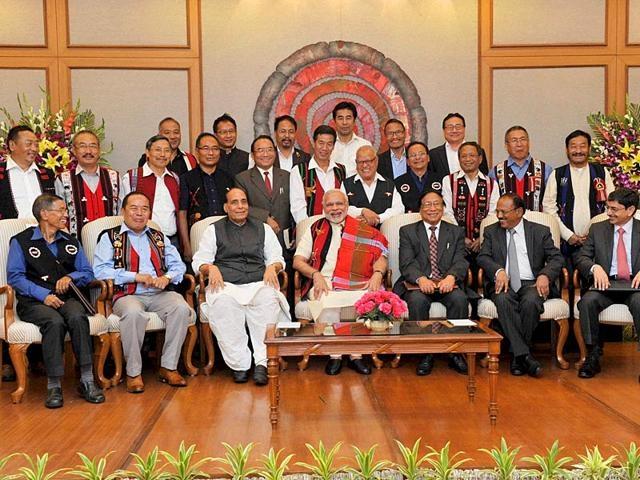
The 213th Report of the Parliamentary Standing Committee on Home Affairs, on the ‘Security Situation in the North Eastern States of India’ has shed some light on the elusive Framework Agreement and the Naga Peace Accord. The responses to what was contained in the report appear to be rather muted. An editorial in The Assam Tribune sums up the apprehensions in the state – despite the National Register of Citizens (NRC) and the Citizenship Bill taking centre stage. Arunachal Pradesh seems to be preoccupied with other issues despite the report confirming a growing pattern of insurgency in the eastern districts of Tirap, Longding and Changlang (TLC). Manipur, on the other hand, seems to have been most active on the Naga issue – apart from the Chief Minister N Biren Singh's comments – an all-party meeting was convened with only the Congress abstaining from attending it. Nagaland has, however, been interestingly quiet on the report with only a press release from the National Socialist Council of Nagaland (Isak – Muivah) (NSCN(IM)).
Read More: Is the Naga Accord Actually 'Almost Finalised'?
The Naga political issue received a special chapter in the report and the Committee was briefed by the current interlocutor for the Government of India, RN Ravi on the progress of the talks. According to the report, Ravi told them:
“In 2015, the Government reached an understanding with the NSCN(IM), which agreed for a settlement within Indian federation, with a special status. The Interlocutor informed the Committee that this was a departure from their earlier position of “with India, not within India” and the Government called it “Framework Agreement” and signed it.”
The report also stated that:
“The Interlocutor apprised the Committee about the broad status of the negotiations and submitted that the negotiations were proceeding towards a situation, where boundaries of any State will neither be changed nor altered. Initially the Nagas had stuck to the idea of unification of Naga inhabited areas, resolutely maintaining their stand of 'no integration, no solution'. However, they had now reached a common understanding with the Government that boundaries of the States will not be touched. Instead, some special arrangement would be made for the Nagas, wherever they are. The negotiations were going on over some symbolic issues, which are sensitive to both the Government and the Nagas as well, and attempts are being made to reach a common understanding".
The Standing Committee's recommendations were most interesting in relation to the Naga talks and its implications for the three neighbouring states – Assam, Arunachal Pradesh and Manipur. Specifically referring to the Naga Peace Accord, the committee recommended:
- Keeping the concerned state governments of Assam, Arunachal Pradesh, and Nagaland informed of all the developments in the course of the negotiations.
- Arriving at the settlement at the earliest considering the unrest among the Nagas over its delay – a reference to the “No Election Without Solution” slogan before the Assembly Elections in Nagaland.
- Ensure that the rehabilitation packages offered will ensure that there will be no scope for another Naga insurgency to emerge.
The Committee also took note of the battle for supremacy among the Naga armed groups in TLC. TLC and the National Socialist Council of Nagaland (Khaplang) (NSCN(K)) have a long history which, at one point, even overlapped with the politics of Arunachal Pradesh. It was through an understanding between the legislators from Tirap and Changlang – Longding had not yet been created – and the NSCN(K) that Mukut Mithi was able to become the chief minister of Arunachal Pradesh. Thus, it is likely that the struggle is between the NSCN(IM) trying to establish itself in the area and the NSCN(K) adopting an area denial strategy.
The NSCN(IM), so far, has been the only party to the negotiations to come out with a statement on the Committee's report. According to the Nagaland Post, the “NSCN (I-M) asserted that it had had never, during negotiations with Government of India (GoI), softened its stand on the issues of Naga history, identity, rights including integration of all Naga areas, let alone accepting the Indian constitution. While pointing out that the relationship between the GoI and the Nagas shall be based on the agreement arrived at, NSCN (I-M) however made it clear that the agreement “should not be distorted by anyone for personal benefits.” If what the NSCN(IM) says is true, then it means that the talks are unlikely to be concluded in the near future.
Read More: Sovereignty, Integration and the Naga Peace Process
The most vocal opposition to the idea of Naga integration comes from the Meitei people and politicians of Manipur. In an interview with the Hindustan Times on July 16, the Chief Minister of Manipur, N Biren Singh made it clear that any deal with the NSCN(IM) involving Manipur's territory would have to be approved by the state assembly. The Biren Singh stated that his government was committed to bridging the hill-valley divide and that concrete steps had been taken. He also highlighted the emotive nature of the issue in Manipur and referred to the unrest in 2001 in which, the assembly was burned down, legislators were attacked and 18 people were killed following the ceasefire 'without territorial limits' signed by the Government of India and the NSCN(IM). On July 22, the all party meeting – minus the Congress – resulted in a consensus that a special assembly session would be convened as and when the need arises.
An article in The Morung Express by Witoubou Newmai, however, challenged the statements made by the Manipur chief minister. He asserted that “the Naga people cannot exchange their rights for mere welfare schemes, no matter how attractive or expensive”. According to Newmai, the All Naga Students Association Manipur (ANSAM) stated that the chief minister's opposition to the Naga people's right to self-determination shows the shortcomings of the people of Manipur in understanding land, people and identity. The Chandel Naga People's Organisation (CNPO) called the chief minister's comments chauvinistic and termed them as 'political misrepresentation'.
However, one of the editorials in today's issue of The Assam Tribune highlighted that Nagaland has boundary issues with all of its neighbouring states. The editorial also mentioned that any settlement involving trans-boundary councils or similar special provisions would amount to an interference in the working of the concerned states.
Read More: The Protests in Dima Hasao are Just the Tip of the Iceberg
However, unlike what is being projected by most of the press and the Government of India, the Framework Agreement and the unborn Naga Peace Accord are essentially between the Government of India and the NSCN(IM) along with the Naga Nationalist Political Groups, instead of with the Naga people. When contacted by Newsclick through email,Kaka D Iralu, a Naga writer and chronicler of the modern political history of the Naga people, wrote, “If a settlement with only IM and the NNPGs is imposed on the Nagas, instead of a solution, we may have a bloody civil war.” He also stated that “Nagas- including most of the leaders in the present state have not given up on their independence which was once and for all declared on 14 Aug 1947. Here we are therefore not asking our independence from India or Burma or even the UN. We are simply asking all these countries to recognise our declared independence which we have been defending for all these past 70 years with our blood and our tears.”
He also denounced the representative character of the Naga civil society organisations, stating that “the Naga Hoho or NPMHR [Naga Peoples Movement for Human Rights] or NSF [Naga Students Federation] or NMA [Naga Mothers Association] are not mass based Naga organisations as projected by the IM and GOI. A real Naga Hoho should be represented by at least 42 Naga tribes. The present Naga Hoho is comprised of only 8 tribes from the so called Nagaland state of India. These civil societies have never been mandated by the Naga nation to utter even a sentence on the Naga political issue or settlement”.
Responding to a query on the NSCN(K)'s potential to upset the negotiations and as a member of the United Liberation Front of Western South East Asia (UNLFW), Iralu stated: “None of the member organisations of the UNLFW- including the NSCN K -have done their political homework or hoisted their flag on 14thAug 1947. As for the NSCN K, it was born only in 1988. Prior to that they were under the Eastern Naga Revolutionary Council which joined the NNC only in 1964. As partners in a bigger body like the UNLFW, NSCN K may be able to create some problems for India after a GOI/IM settlement. But NSCN K has no political future without its roots in the NNC. This is what I have been telling the K and some of them have grasped these political historical and legal facts.”
Read More: The Complexities of the Elusive Final Agreement
Iralu's response then brings to question what the future will hold for the Naga people and the political movement. One issue is whether the Naga Peace Accord will be in the nature of a solution or a settlement. Considering the response of RN Ravi to the Committee on the topic, it appears that it will be in the form of a settlement rather than a solution, and will be done in a manner to allow the NSCN(IM) and the NNPGs to retire without anybody pointing fingers at them. However, the NSCN(K), which is a founding member of the UNLFW, can still play spoilsport. This then leads one to consider whether it will be the NSCN(K) or the Naga National Council (NNC) and the Federal Government of Nagaland (FGN) who will once again appear as powerful shapers of the discourse on Naga politics. However, since the NNC FGN is still waiting for the Government of India to contact the FGN's Executive Council, it is unlikely that they would be the ones to return to arms.
What is indisputable is that the outcome of the negotiations will be most unlikely to bring about a lasting peace to Nagaland and her neighbours. Given that the NSCN(K) is still making its presence felt in and around Nagaland along with the UNLFW, the peace may soon be shattered by internecine clashes between the NSCN(K) and the demobilised NSCN(IM).
Get the latest reports & analysis with people's perspective on Protests, movements & deep analytical videos, discussions of the current affairs in your Telegram app. Subscribe to NewsClick's Telegram channel & get Real-Time updates on stories, as they get published on our website.









